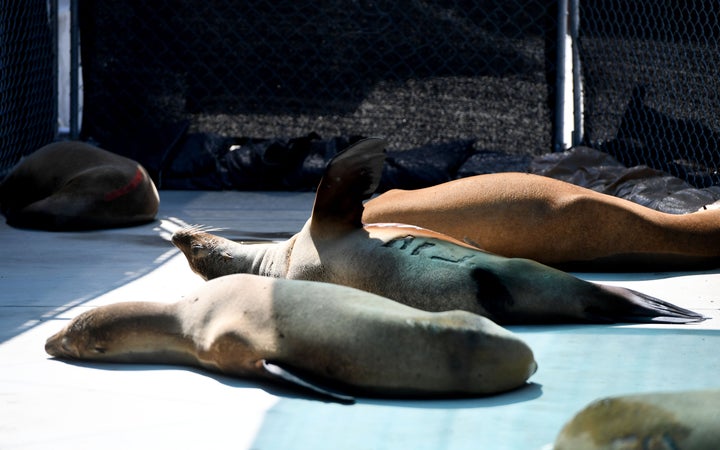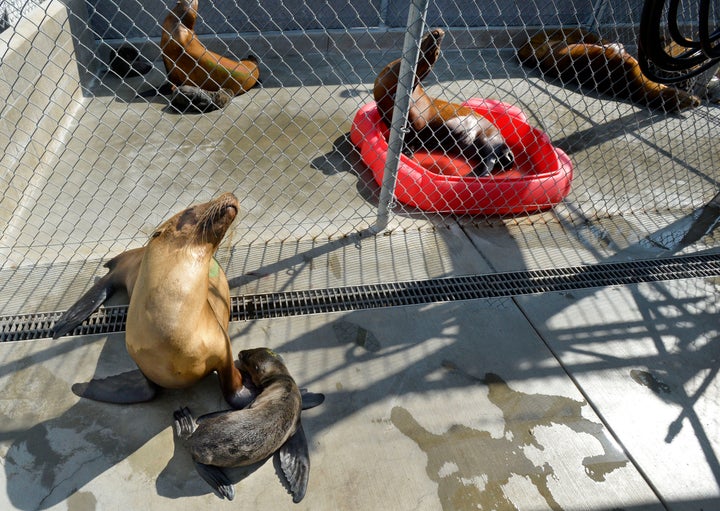A toxic algae bloom is believed to be behind the overwhelming numbers of severely sickened marine mammals.
Wildlife officials in Southern California have been inundated over the past month with reports of sick or dead sea lions and dolphins stranded on the beaches.
Experts believe that a toxic algae bloom is poisoning the marine mammals.
“It’s completely overwhelming,” National Oceanic and Atmospheric Administration (NOAA) stranding coordinator Justin Greenman told CNN. He called the surge of affected animals “one of the largest in memory.”
Ruth Dover, co-founder of Channel Islands Marine & Wildlife Institute, told The Guardian in an article published this week that her nonprofit is receiving “more than 300 reports a day” about animals in need of help.
At least 100 dolphins and 100 sea lions have been found dead, and hundreds more have been found sickened as an apparent result of eating an algae called pseudo-nitzschia.
Marine mammal rescue groups believe the algae, which produces a neurotoxin called domoic acid, is causing the sickness and death. Though scientists are still working to confirm the algae is the cause, NOAA spokesperson Michael Milsten told CNN that the phenomenon has “all the hallmarks of an algal bloom.”

Warming waters as a result of climate change can contribute to algae growth. Though in this case, Milstein said the primary cause appears to be coastal upwelling ― a process that happens when winds push surface waters offshore and deeper water, in turn, gets pulled upwards. That deeper water tends to be rich in nutrients, creating conditions for an algal bloom.
Symptoms of eating the algae include seizures, dehydration and aggressive or lethargic behavior, according to Los Angeles’ Marine Mammal Care Center, which has set up an emergency clinic for the growing number of affected animals.
Treatment typically includes hydrating the animals with fluids, administering anti-seizure medication and ensuring they get proper nutrition as they recover.

In a few instances, sick sea lions have also bitten beachgoers. At least two beaches in Southern California were temporarily closed earlier this week after biting incidents, and there have been a handful of additional biting reports.
“It’s not like this is a rabid sea lion running down the beach chasing people and biting them,” Dr. Alissa Deming of the Pacific Marine Mammal Center told The Los Angeles Times.
It’s more that sick animals are reactive if someone gets too close.
“They’re either running into surfers if they’re seizing erratically and accidentally biting them,” she said. “If someone touches them, they can be hyper-reactive and reflexively fly their head back. It’s not like they’re attacking — they’re in a comatose state, and if they’re spooked or bump into something, they may bite.”
She said that humans should be careful to give plenty of space to sea lions and keep any dogs on a leash.
Credit: Source link